Inescapable Military Feel
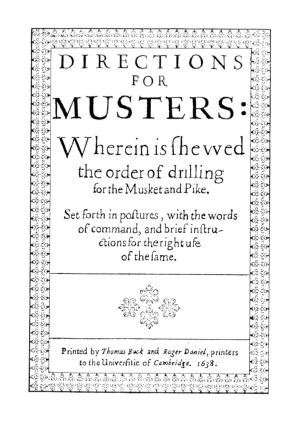
Drill Manuals
The Directions for Musters was printed by the Cambridge University printers in 1638 and features the drill postures for both pike and musket, along with commentary and citations of the applicable legislation on the responsibilities and structure of the militia. By arrangement with the current publisher, it is only available to members of the Pike and Musket Society of NSW.
The Exercise of the English, in the Militia of the Kingdome of England published in 1641 is again specific to the London Trained Bands. The text is a more or less verbatim copy of Prince Maurice of Nassau’s basic infantry drill, given in the appendix of John Bingham’s The Tacticks of Aelian, from 1616.
The definitive drill manual was written by a member of the Society of the Artillery Garden. Barriffe’s Militarie Discipline, or The Young Artillerieman ran for a number of editions, the first in 1637. This fourth edition copy is from 1648, it remained in press until 1665. The full name runs for the best part of a page and serves as a review as much as a title. Chapters 76 and 77 cover how the double-armed pikeman may send “their showers of arrows” into the advancing enemy while the musket are reloading.
Finally, we have Edward Cooke’s somewhat amateurish The Character or Warre, or The Image of Martiall Discipline released in 1626 is specifically targeted at the Middlesex Trained Bands. Cooke presents a mashup of John Bingham’s The Tacticks of Aelian, of 1616 and Vergetius’ Epitoma Rei Militaris from before AD385. This manual features the “Rotate About Your Fundament” manoeuvre last performed at the 2005 Gunpowder Plot re-enctment.
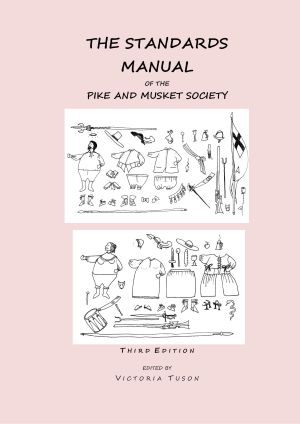
Standards Manual
Standards Manual 3rd edition
Standards Manual 2nd edition
Standards Manual 2nd edition – Patterns
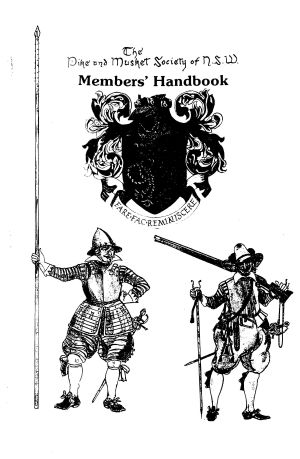
Members’ Handbook 1989
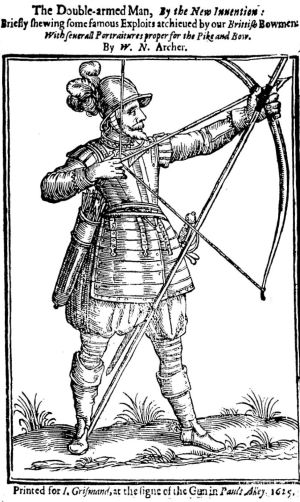
Archery Manuals
Published by Markham (who was a publisher rather than author) in 1634, The Art of Archerie is really the second volume of Roger Ascham’s Toxophilus updated to the 17th century idiom.
and with a new first chapter that summarises all of Ascham’s first volume. The dedicatory epistle to the Privy Council and Muster Master General recommends,
“… this little treatise of The Art of Archerie and how it may profitably by used in this kingdom, to the advancement of the trained bands (to whose glory and good, your place especially calls you) to the propagation and increase of young soldiers …”
and in the new Chapter 1,
“Now, if it would please his Majesty, or those to whom he has dispensed such authority, to command, that these supplies should give their attendance with bows, arrows & palizadoes, or staves, assuming the likeness of the palizadoe & so to be exercised with the trained bands which carry pike & musket.
…so would I have the bow employed, and as the musket do wing the pike so I would have the bow to wing the musket, observing to keep the number so just and constant that one weapon might not intermix with another, but as three distinct and several bodies, (however joined in one battalion) to be separated and disposed at the pleasure of the commander; and because the bow is a more ready and quicker weapon of side charge then the musket, the captains may by doubling, either ranks or files, make his showers of arrows greater or less, according to the advantage of ground, the strength of his numbers, or the approach of the enemy.”
William Nead was an inventor, veteran and tutor of archery to the King. Observing that while the musket were reloading, the pike simply provided a target for the cannon of the other team, Neade developed a solution that provided an offensive screen for defensive troops.
The book The Double-Armed Man was published in 1625, arguing at some length in favour of his invention and showing the drill postures.
In 1630, Objections Against the Use of the Bow with the Pike was published as a rebuttal of the common criticisms, much in the form of a modern FAQ.
The King gave a Royal Commission to encourage the use of the invention in England and Wales n 1633. This specified use by “all who are to exercise arms in the use of weapons especially the chiefe officers and all others of our Trayned-Bands”. In 1637, 300 members of the Artillery Company armed with bow and pike paraded and performed drill before his Majesty.There’s evidence that the Deputy Lieutenants introduced the combination to some of the Country Trained Bands, although adoption wasn’t universal.
The anonymous author of A New Invention for Shooting Fireshafts in Longbowes was familiar with Nead’s work and approved. He sought to build on Nead’s range and superior rate of fire with an incendiary or explosive projectile.
“[Archers] may shower down incessant drops of fire, like Sodom’s rain, upon an enemy, as it will not only annoy the pikes and rout the horse but altogether disable the musket.”
The tested range was 240-280 yards. Fire-shafts were used in sieges during the Civil Wars and in Ireland.
The last one is the rules observed at the archery field. While the book dates from 1664, the rules evolved over the previous 200 years.
Hannis, Richard, Aime for the Archers of St Georges Fields — Containing the Names of all the Marks in the same Fields, with their true distances according to the dimensions of the line formerly gathered by Richard Hannis: and now corrected by Thomas Bick, and others. London, 1664.
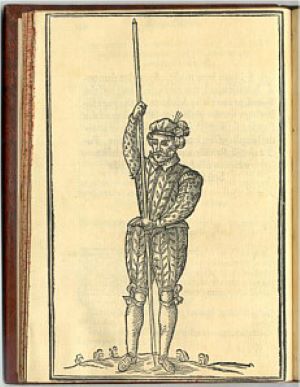
Orders
Orders for 1985
Orders for 1987
Orders for 1988
Orders for 1989
Orders for 1990
Orders for 1991
Orders for 1992
Orders for 1993
Orders for 1994
Orders for 2016
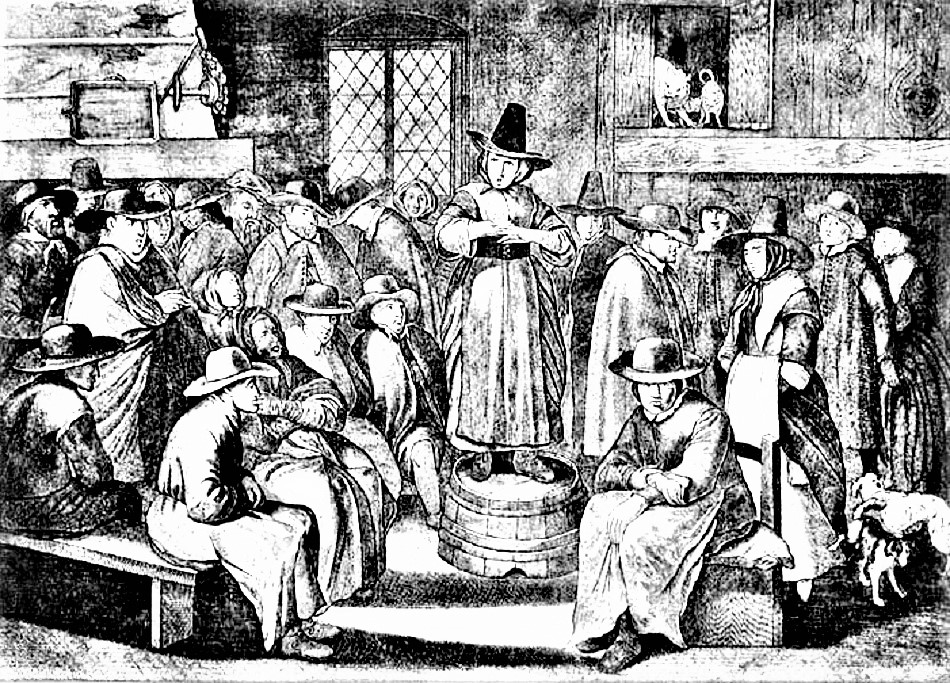
Meetings and Miscellany